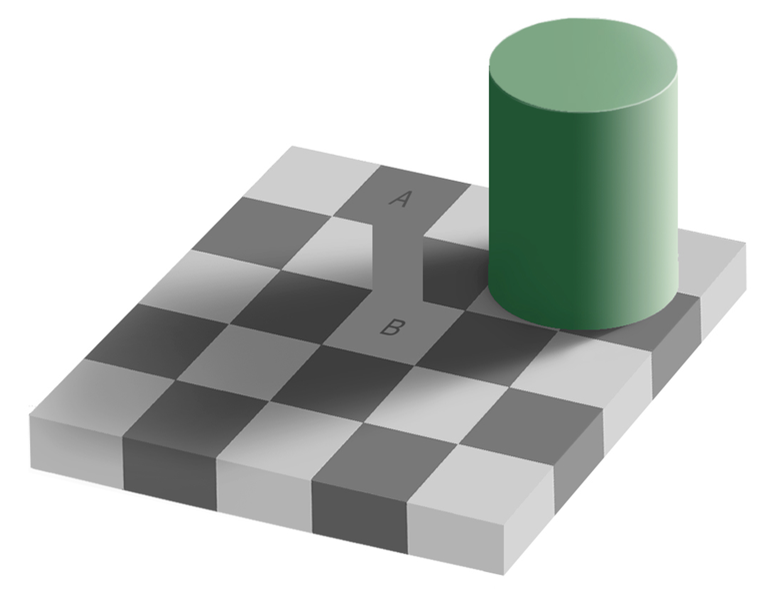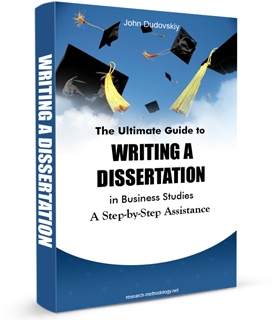Realism Research Philosophy
Realism research philosophy relies on the idea of independence of reality from the human mind. This philosophy is based on the assumption of a scientific approach to the development of knowledge. Realism can be divided into two groups: direct and critical.
Direct realism, also known as naive realism, can be described as “what you see is what you get”[1]. In other words, direct realism portrays the world through personal human senses.
Critical realism, on the other hand, argues that humans do experience the sensations and images of the real world. According to critical realism, sensations and images of the real world can be deceptive and they usually do not portray the real world.[2]
An example of an optical illusion below can be used to illustrate the difference between direct and critical realism. Squares A and B appear to be different colours because of neighbouring contrasting squares, but actually they are the same colour. Direct realists would state that squares A and B have different colours, because this is what they see.
Illustration of direct realism and critical realism[3]
Critical realists, on the other hand, recognise that our senses and other factors may get in the way between us as researchers and researched reality. Therefore, critical realists may notice that squares A and B are actually the same colour.
Direct realists accept the world as relatively unchanging. They concentrate on only one level, be it individual, group or an organization. Critical realists, on the other hand, appreciate the importance of multi-level study. Specifically, as a researcher following critical realism research philosophy you have to appreciate the influence and interrelationship between the individual, the group and the organization.
Table below illustrates the ontology, epistemology, axiology and research methods associated with critical realism research philosophy
| Ontology | Epistemology | Axiology | Typical methods |
| Stratified/layered (the
empirical, the actual and the real)
External, independent Intransient
Objective structures Causal mechanisms |
Epistemological
Relativism
Knowledge historically situated and transient
Facts are social Constructions
Historical causal explanation as contribution |
Value-laden research
Researcher acknowledges bias by world views, cultural experience and upbringing
Researcher tries to minimise bias and errors
Researcher is as objective as possible |
Retroductive, in-depth
historically situated analysis of pre-existing structures and emerging agency. Range of methods and data types to fit subject matter |
Ontology, epistemology, axiology and research methods associated with critical realism research philosophy
There is a consensus among researchers that critical realist is more popular and appropriate than direct realist approach due to its ability to capture the fuller picture when studying a phenomenon. Accordingly, if you have chosen realism as your research philosophy you are advised to assume the role of critical realist, rather than direct realist.
My e-book, The Ultimate Guide to Writing a Dissertation in Business Studies: a step by step assistance contains discussions of theory and application of research philosophy. The e-book also explains all stages of the research process starting from the selection of the research area to writing personal reflection. Important elements of dissertations such as research philosophy, research approach, research design, methods of data collection and data analysis are explained in this e-book in simple words. John Dudovskiy
[1] Saunders, M., Lewis, P. & Thornhill, A. (2012) “Research Methods for Business Students” 6th edition, Pearson Education Limited
[2] Novikov, A.M. &Novikov, D.A. (2013) “Research Methodology: From Philosophy of Science to Research Design” CRC Press
[3] Photo Credit: Edward H. Adelson (1995)


